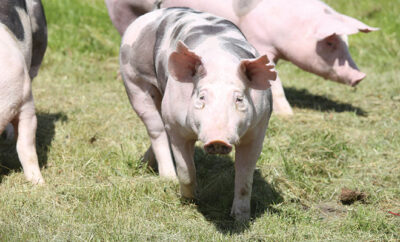
Thermogenic Foods: Eating to Stay Warm
If you get tired of winter before it even begins, February may seem like the longest month of the year instead of the shortest one. Even though there are more hours of daylight each day, February can bring some of the worst weather of the season.
One way to cope with a dismal, dreary late-winter chill is, of course, through food. Most of us overindulged through the holiday season and at least thought about recommitting to a healthy diet and exercise plan in the New Year. By February, those plans may be a dim memory. All this makes February a good month to consider foods with thermogenic properties–foods that take more energy to digest and assimilate than the calories they provide–to keep you warm, and keep your metabolism humming.
Keep in mind that thermogenic foods are not magical. Despite the fact that Americans invest over $60 billion each year on weight loss programs and products, no single food or supplement can live up to the claim of being a guaranteed “fat buster.” Any food will keep you warm, but some foods and food combinations are more beneficial than others. There are small steps you can work into your daily life right now that will help boost your health over time.
First, let’s look at circulation, not your blood circulation, but another system that is crucial to your health–your lymphatic system. Your volume of lymph fluid is twice that of the amount of blood in your body. Lymph fluid supports your immune system, nervous system and digestion by carrying away waste on a cellular level. There is no central pump for this lymph fluid; you must keep it moving through activity–exercise, deep breathing and massage.
One way to jump-start lymph function and digestion each morning is by drinking the juice of a lemon, in warm water, with a teaspoon of honey to sweeten the drink. This promotes production of digestive enzymes in the stomach, which helps to digest and expel waste. Lemon juice also supplies vitamins A and C, as well as beneficial trace minerals such as potassium. Drink plenty of water throughout the day, too. A large glass of water before each meal helps your body get the message that your stomach is full before you reach for that second helping.
Analyze the foods you choose on a daily basis. The best foods for supporting your body are whole, unprocessed foods with an ingredient list that is the food itself (apple, carrot, egg). Processed food and fast food are often low in nutrition, high in sugar and sodium, and have a host of chemical additives. These chemicals aren’t there for your health. Rather, they make food more flavorful and visually appealing, and they give it a long and stable shelf life. Do your body a favor–avoid these foods as much as possible. Focus on the healthy choices of whole foods, organic foods and raw foods.
Humankind has evolved over centuries on a diet of fruits, vegetables, meats and fat. Ironically, dietary fat has come to be regarded as the enemy of good health, when in fact fats are crucial for a properly functioning body. But it’s important to focus on fats that are healthy as opposed to unhealthy fats, such as corn oil, canola oil and soybean oil.
Instead, use fats that are optimal for good health, such as avocado oil, olive oil, ghee (which is clarified butter, essentially pure butter fat with the casein protein removed) and coconut oil. Yes, coconut oil is actually beneficial. It provides medium-chain fatty acids (MCFAs) that are not found in other fats. Studies have shown that these MCFAs have a thermogenic effect that lasts for 24 hours, so using a couple of tablespoons of coconut oil each day may help your metabolism over time. Ghee and coconut oil also have a lower “smoking point,” which means they tolerate higher heat than other oils, making them a good choice for high-heat cooking such as a pan-seared steak or stir-fry vegetables.
Although diet is only one component of good health, small changes in your daily habits will add up over time. Now’s the time to start! HLM
Sources: C. Phillips, PhD, and P. Manfory, MD., 101 Ways to Supercharge Your Metabolism; L. Bosch and J. Colquhoun, Hungry For Change: Ditch the Diets, Conquer the Cravings, and Eat Your Way To Lifelong Health; S. Rigden, MD, and B. Schiltz, RN, The Ultimate Metabolism Diet; drsarasolomon.com, seattlepi.com and thehealthsite.com.
Add these foods to your diet for optimal thermogenic effects:
Protein: Chicken, fish, lean meats
Vegetables: Asparagus, broccoli, cauliflower
Complex carbohydrates: Beans, lentils, sweet potatoes
Spices: Cinnamon, ginger, pepper
Healthy fats: Coconut oil, ghee, olive oil
Beverages: Green tea, lemon juice, water
These easy and healthy thermogenic snacks can be eaten alone, layered atop chopped lettuce, or wrapped in sprouted corn tortillas or lettuce leaves:
Sliced avocado, sliced turkey breast
Black beans, peppers, salsa, chopped lean meat
Celery stuffed with nut butter, carrot sticks
Apples or pears, chopped walnuts or pistachios, sprinkled with cinnamon
Raw almonds, walnuts, dark chocolate chips
Smoked salmon with fresh herbs such as dill
Grape tomatoes, garbanzo beans
Hummus, olives, sriracha







